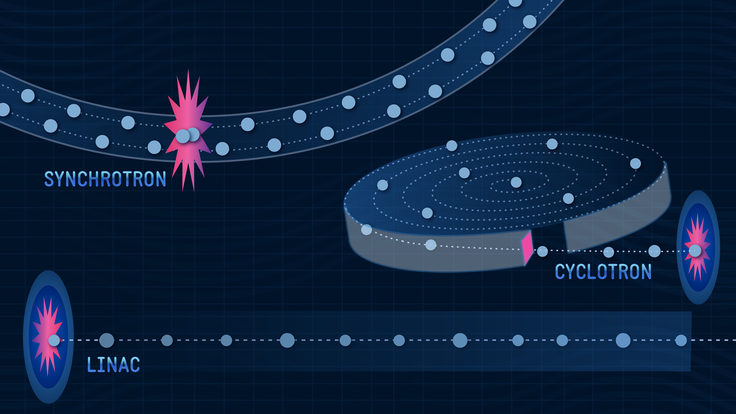Light sources are accelerator-based machines that produce exceptionally intense, tightly focused beams of light, in the energy range from infrared to X-rays. They are used for research in fields from physics, chemistry, and materials science to biology, medicine, and forensics.
Like “super microscopes,” light sources help resolve the structure of matter down to the level of atoms and molecules. Today more than 50 light source facilities around the world serve a steadily growing number of scientists.
Just as light from a laser is much more concentrated and intense than light generated by a flashlight, an X-ray beam produced by a light source is much narrower and a trillion times brighter than the beam produced by a hospital X-ray machine.
Most light sources are synchrotrons: football-field- or larger-sized accelerators that send electrons around in a loop. Magnetic accelerator components known as wigglers and undulators make the electrons rapidly oscillate side-to-side. The motion causes the electrons to radiate photons–light, which travels through dedicated beamlines to experimental stations. A synchrotron can have dozens of beamlines, each of which provides light of different frequency for numerous types of experiments.
The next generation of light sources, starting to come online now, provides laser-like light at ultraviolet or X-ray energies. These “free electron lasers” make such short, intense light pulses that experimenters can record time-lapse movies of chemical processes.
Adapted from lightsources.org







